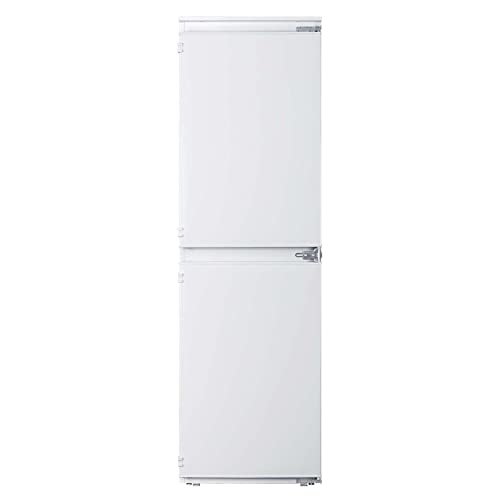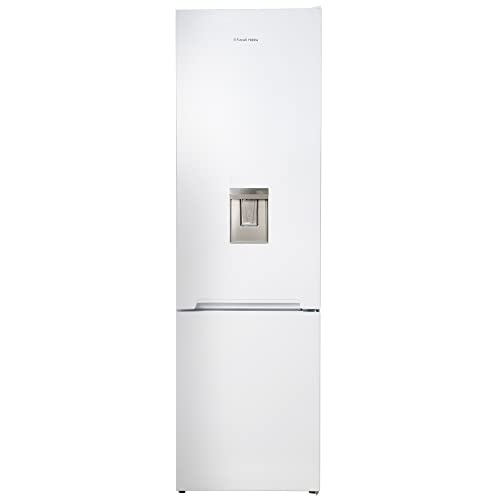
Fridge Freezer Uk
Overview
-
Founded Date June 23, 1958
-
Sectors Art & Design & Creative
-
Posted Jobs 0
Company Description
Is Fridges And Freezers The Same As Everyone Says?

Understanding Fridges and Freezers: The Essential Kitchen Appliances
Refrigerators and freezers are two of the most vital appliances in contemporary kitchen areas. These home appliances serve an important function in food preservation and waste decrease by making sure that perishable products remain fresh and safe for usage. This short article explores the various kinds of fridges and freezers, their functionalities, and crucial factors to consider for selection and upkeep.
Kinds of Refrigerators
The marketplace provides a range of refrigerator types, each created to fulfill different consumer requirements. Below is a list of the most typical kinds of fridges:
-
Top-Freezer Refrigerators
- Most typical type.
- Freezer compartment is situated above the refrigerator area.
- Usually more budget-friendly and energy-efficient.
-
Bottom-Freezer Refrigerators
- Freezer lies at the bottom.
- Allows much easier access to fresh products at eye level.
- Often includes pull-out drawers for better company.
-
Side-by-Side Refrigerators
- Refrigerator and freezer areas are adjacent.
- Suitable for narrow kitchen areas and permits easy access to both compartments.
- Frequently features water and ice dispensers.
-
French Door Refrigerators
- Integrates a bottom freezer with double doors at the top.
- Offers ample storage and elegant styles.
- Often consists of features like temperature-controlled drawers.
-
Compact Refrigerators
- Smaller size suitable for restricted spaces.
- Commonly used in dormitory, studio apartments, or as secondary fridges.
Table 1: Comparison of Refrigerator Types
| Type | Advantages | Drawbacks | Typical Size |
|---|---|---|---|
| Top-Freezer | Budget-friendly, energy-efficient | Less convenient access to the freezer | 14-30 cu. ft. |
| Bottom-Freezer | Much easier access to fresh food | Freezer can be more difficult to arrange | 19-30 cu. ft. |
| Side-by-Side | Easy access, water/ice dispenser | Narrow vs. storage space | 22-30 cu. ft. |
| French Door | Stylish, roomy, organized | More expensive | 20-30+ cu. ft. |
| Compact | Space-saving, portable | Minimal storage | 1.7-5.5 cu. ft. |
Types of Freezers
Freezers are an equally important appliance for food conservation. They are available in various designs created to fit different household needs. Consider the list below types:
-
Upright Freezers
- Run like a standard refrigerator with vertical storage.
- Simpler to arrange with shelves and compartments.
-
Chest Freezers
- large fridge freezer uk (https://www.frydge.uk/), horizontal design typically offering more storage space.
- Maintains temperatures much better throughout power outages.
- More energy-efficient than upright models.
-
Portable Freezers
- Compact units perfect for outside activities or small areas.
- Often utilized for camping journeys or as short-term storage.
Table 2: Comparison of Freezer Types
| Type | Benefits | Downsides | Typical Size |
|---|---|---|---|
| Upright Freezer | Easier to organize | Less energy-efficient, more flooring area | 5-20 cu. ft. |
| Chest Freezer | Holds more products, energy-efficient | Harder to organize | 5-25 cu. ft. |
| Portable Freezer | Compact and flexible | Restricted storage capacity | 1-10 cu. ft. |
Key Features to Consider
When choosing a fridge or freezer, customers should bear in mind numerous functions that can enhance functionality:
- Energy Efficiency: Look for models with the ENERGY STAR certification to save on electricity bills.
- Storage Capacity: Evaluate storage requirements based upon household size and eating habits.
- Temperature level Control: Some home appliances offer digital controls for accurate temperature level settings.
- Adjustable Shelving: Customizable shelving permits optimum organization.
- Water and Ice Dispenser: Offers benefit however can use up important space inside.
- Sound Level: Sound rankings can affect convenience, especially in open-concept homes.
Benefits and drawbacks of Having a Fridge and Freezer
While fridges and freezers are essential innovations, they likewise have specific benefits and drawbacks:
| Pros | Cons |
|---|---|
| Protect food life expectancy and minimize waste | Require routine maintenance |
| Allow bulk buying and meal prepping | Can be pricey to purchase and run |
| Deal convenience and quick access to food | Inhabit significant kitchen area space |
Upkeep Tips
To guarantee longevity and optimal performance of fridges and freezers, consider the following maintenance tips:
- Regular Cleaning: Clean the interior and exterior regularly to prevent accumulation of dirt and bacteria.
- Examine Seals: Inspect door seals routinely for leakages to preserve efficiency.
- Temperature Settings: Keep the fridge at 34-38 ° F and the freezer at 0 ° F for optimum food preservation.
- Defrost as Needed: Chest freezers should be thawed regularly to keep effectiveness.
- Clear Air Vents: Ensure that air flow isn’t obstructed to improve energy effectiveness.
FAQs About Fridges and Freezers
Q1: How long can food be saved in a freezer?A: Most foods can be kept in a freezer for numerous months. Meats and poultry frequently last 4-12 months, while vegetables can last as much as 8-12 months.
Q2: How typically ought to I clean my fridge and freezer?A: It is advisable to clean your fridge and freezer every 3 to 6 months, or as needed when spills take place. Q3: Can I put hot food straight in the fridge?A: It is advised to cool hot food to space temperature level before placing it in the fridge to avoid
raising the temperature level inside the appliance. Q4: Why is my fridge running constantly?A: This might be due to a malfunctioning thermostat, clogged up coils, or door seals that aren’t working correctly. Fridges and freezers are indispensable
possessions to contemporary families, supplying vital services for food storage and preservation.
Understanding the numerous types, functions, and upkeep requirements can help consumers choose the best home appliances for their requirements and maximize their functionality. Welcoming energy-efficient models not only supports sustainable practices but likewise contributes to substantial cost savings on energy costs, making informed options more essential than ever.
